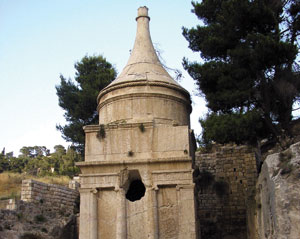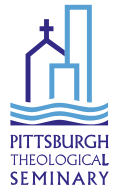 Pittsburgh Theological Seminary will host Dr. Gabriel Barkay, from Bar Ilan University and Hebrew University, Tues., Sept. 17, 2013 at 7:30 p.m. for the archaeology lecture “Who’s Buried in Absalom’s Tomb?”
Pittsburgh Theological Seminary will host Dr. Gabriel Barkay, from Bar Ilan University and Hebrew University, Tues., Sept. 17, 2013 at 7:30 p.m. for the archaeology lecture “Who’s Buried in Absalom’s Tomb?”
For centuries, pilgrims have associated an impressive burial monument in the Kidron Valley with the burial place of David’s rebellious son Absalom. His infamy led medieval visitors to cast stones at the 47-foot-high monument. One historian recorded: “the inhabitants of Jerusalem would bring their unruly sons hither and whipping them would cry, ‘Look, this is what a rebellious son comes to!’” But the tomb’s design, featuring Ionic columns, a Doric frieze, and a conical pyramid, suggests a construction date much later than David and Absalom’s time. The monument certainly existed by the time of Josephus, since he mentions it in his Antiquities of the Jews (VII.10.3). Some have connected it with Alexander Jannaeus, king of Judea from 103–76 BCE. A recently deciphered inscription on one of the tomb’s walls relates the monument to Zechariah—“martyr, priest, and father of John the Baptist”—even though another, nearby tomb carries the name “Tomb of Zechariah.” Muslim tradition calls the edifice “Pharaoh’s Hat.” Some even say that Napoleon (who never actually visited Jerusalem) destroyed the top of the conical roof with a mortar round.
Legends abound. But for whom was this tomb really built? And how does it relate to other burial monuments in the valley? At a recent press conference in Jerusalem, Barkay presented a fresh interpretation that may solve these riddles. Come hear this renowned archaeologist discuss the latest information relating to the most famous concentration of rock-hewn tombs from Second Temple period Jerusalem.
The Kelso Museum of Near Eastern Archaeology will be open from 6:30-7:15 p.m. and after the lecture. The lecture and reception to follow are free and open to the public.
 Pittsburgh Theological Seminary will host Dr. Gabriel Barkay, from Bar Ilan University and Hebrew University, Tues., Sept. 17, 2013 at 7:30 p.m. for the archaeology lecture “Who’s Buried in Absalom’s Tomb?”
Pittsburgh Theological Seminary will host Dr. Gabriel Barkay, from Bar Ilan University and Hebrew University, Tues., Sept. 17, 2013 at 7:30 p.m. for the archaeology lecture “Who’s Buried in Absalom’s Tomb?”
For centuries, pilgrims have associated an impressive burial monument in the Kidron Valley with the burial place of David’s rebellious son Absalom. His infamy led medieval visitors to cast stones at the 47-foot-high monument. One historian recorded: “the inhabitants of Jerusalem would bring their unruly sons hither and whipping them would cry, ‘Look, this is what a rebellious son comes to!’” But the tomb’s design, featuring Ionic columns, a Doric frieze, and a conical pyramid, suggests a construction date much later than David and Absalom’s time. The monument certainly existed by the time of Josephus, since he mentions it in his Antiquities of the Jews (VII.10.3). Some have connected it with Alexander Jannaeus, king of Judea from 103–76 BCE. A recently deciphered inscription on one of the tomb’s walls relates the monument to Zechariah—“martyr, priest, and father of John the Baptist”—even though another, nearby tomb carries the name “Tomb of Zechariah.” Muslim tradition calls the edifice “Pharaoh’s Hat.” Some even say that Napoleon (who never actually visited Jerusalem) destroyed the top of the conical roof with a mortar round.
Legends abound. But for whom was this tomb really built? And how does it relate to other burial monuments in the valley? At a recent press conference in Jerusalem, Barkay presented a fresh interpretation that may solve these riddles. Come hear this renowned archaeologist discuss the latest information relating to the most famous concentration of rock-hewn tombs from Second Temple period Jerusalem.
The Kelso Museum of Near Eastern Archaeology will be open from 6:30-7:15 p.m. and after the lecture. The lecture and reception to follow are free and open to the public.
